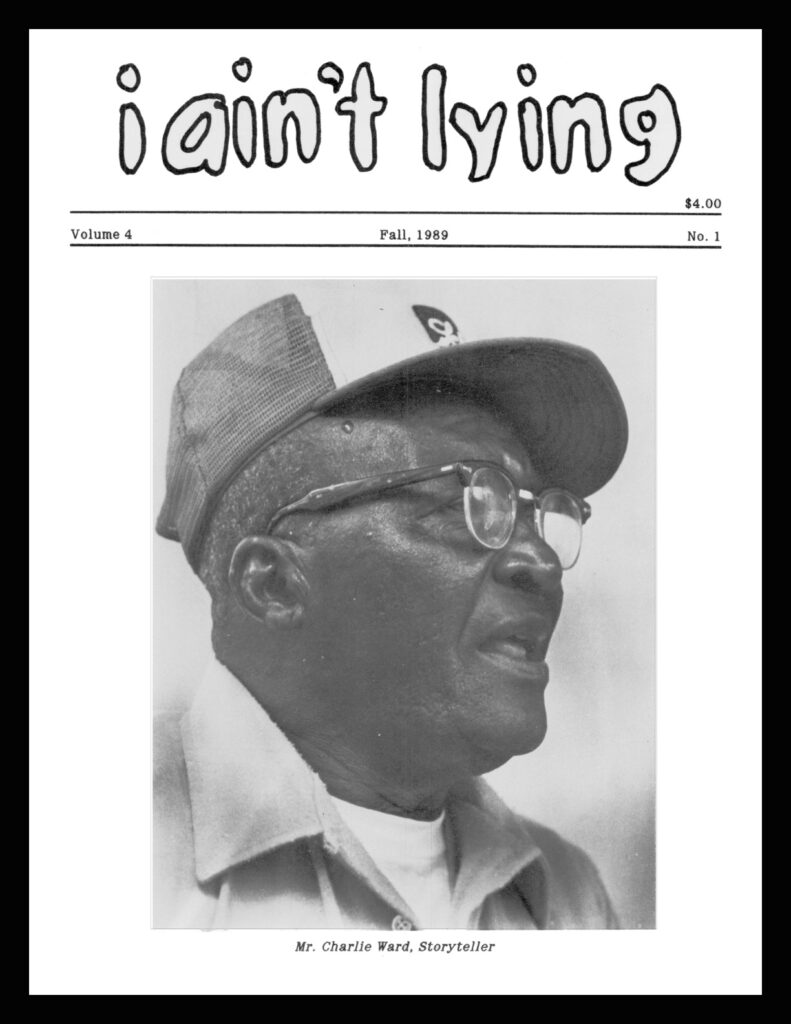
Historical I Ain’t Lying Magazine Now a Digital Exhibit on Mississippi Folklife
Mississippi Arts Commission’s Folk & Traditional Arts program announces the release of the I Ain’t Lying (IAL) Magazine digital exhibit on the Mississippi Folklife website.

I Ain’t Lying was a cultural journalism magazine that explored local life in Claiborne County, MS. It was published in four issues between 1980 and 1989 by Mississippi Cultural Crossroads (MCC) in Port Gibson. This exhibit marks the first time that the magazine is available digitally and the first time that content from the unpublished Volume 5 is available to the public.
“The interviews in I Ain’t Lying collectively tell an intimate story of life in Claiborne County that spans decades,” said Maria Zeringue, Folk and Traditional Arts Director for MAC. “The magazine captures the transmission of knowledge from one generation to the next and shows what we can learn from the wisdom of those who have gone through life before us.”
Felicia Harried, President, Board of Directors for Mississippi Cultural Crossroads, shared her thoughts on having this historical publication digitized and released to the public, “We are grateful and elated to have these publications digitally available to the public! One of the project goals was to encourage the interest and curiosity of young people to explore the unique history and culture right around them as told by the people who lived it.”

Local high school students produced the magazine and interviewed elders and residents in their community. Under the guidance of MCC staff and volunteers, the students recorded and transcribed the interviews and wrote introductions to each interview featured in the publication. The magazine featured topics such as quilting, midwifery, home remedies, children’s games, songs, and local history, as well as portraying what life was like for community members who called Claiborne County home.
“Now, some 40 years later, not only do we get to peek into the everyday life and memories of the people featured in the magazines, but those student journalists now have children and grandchildren with whom they can share a tangible and relevant part of their own childhood,” said Harried.

Harried also discussed the significance of digitizing the magazine. “The pictures and interviews captured in the IAL series adds rich, firsthand cultural context that breathes life into the names and places of the past and reminds us of the importance of capturing this kind of documentation for future generations.”
The Mississippi Arts Commission would like to thank those who made this digitization project possible, including Patty and David Crosby, Sarah Crosby Campbell, Laura Heller, Laurie McCarthy, Chioma Ajuonuma, Henry da Massa, Emily Bryant, Maria Zeringue, Mississippi Cultural Crossroads, Mississippi Department of Archives and History, and the National Endowment for the Arts.
“It is my hope in digitizing the magazine, that it reaches new audiences and sheds some light on the diverse perspectives and experiences that make up a community,” said Zeringue.
This project is free and accessible to the public online and is possible thanks to the generous support of the National Endowment for the Arts.
The I Ain’t Lying Magazine exhibit can be accessed by visiting, https://mississippifolklife.org/exhibits.
For more information about the exhibit, please contact Maria Zeringue, Folk and Traditional Arts Director, at the Mississippi Arts Commission at mzeringue@arts.ms.gov. To view other publications and articles from Mississippi Folklife, visit https://mississippifolklife.org.
The Mississippi Arts Commission (MAC) is a state agency serving more than two million people through grants and special initiatives that enhance communities, assist artists and arts organizations, promote arts education, and celebrate Mississippi’s cultural heritage. MAC is funded by the Mississippi Legislature, the National Endowment for the Arts, and other private sources. For more information, visit www.arts.ms.gov.
Mississippi Folklife is a digital journal featuring original writing and documentary work focused on present-day folk and traditional arts within the state, managed and produced by the Mississippi Arts Commission. Originally a print publication, Mississippi Folklife was established in 1927 by the Mississippi Folklore Society. For more information, visit mississippifolklife.org.
